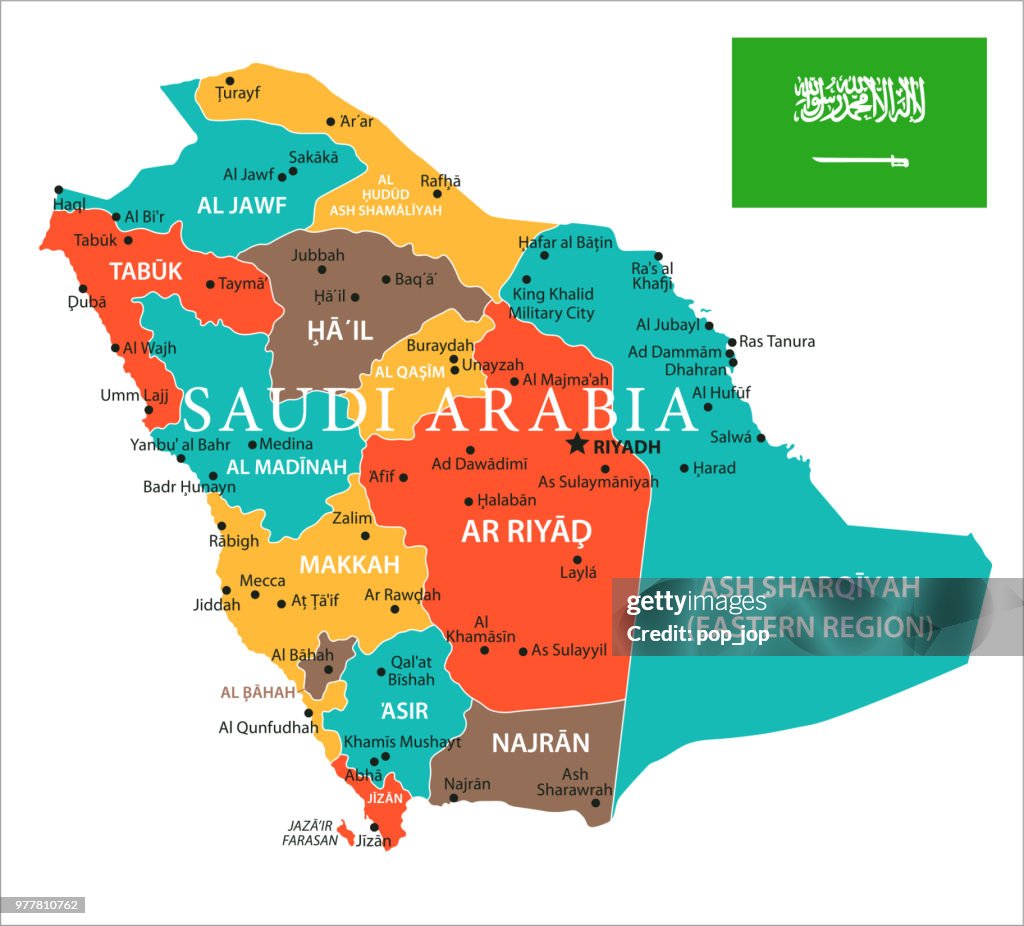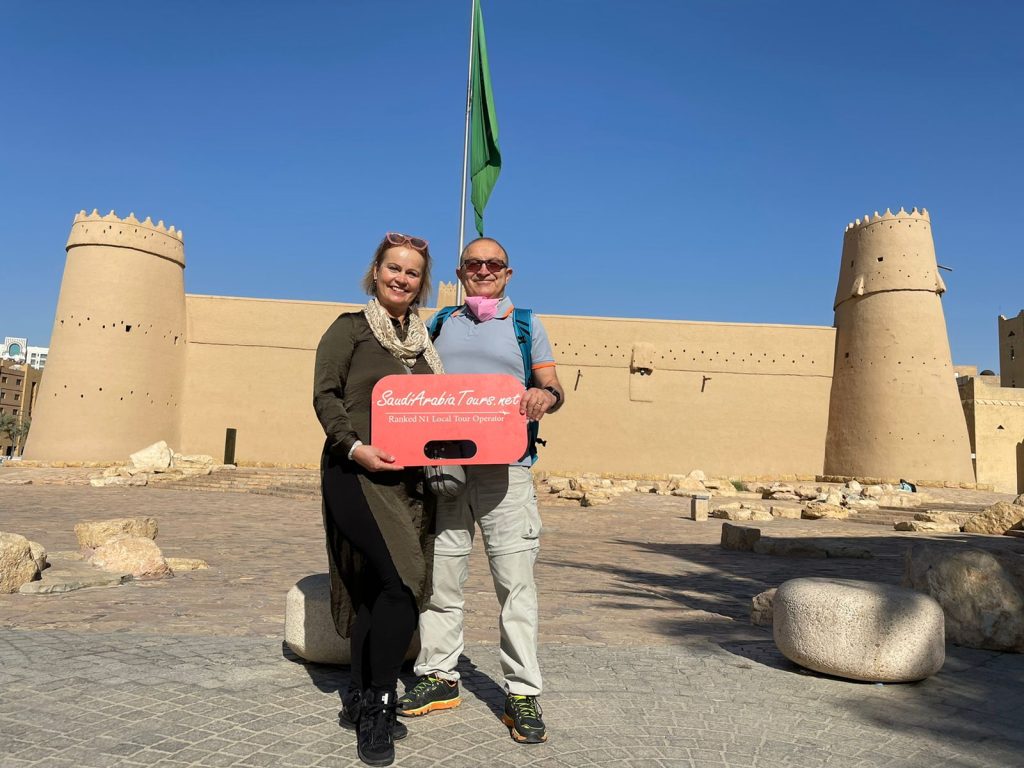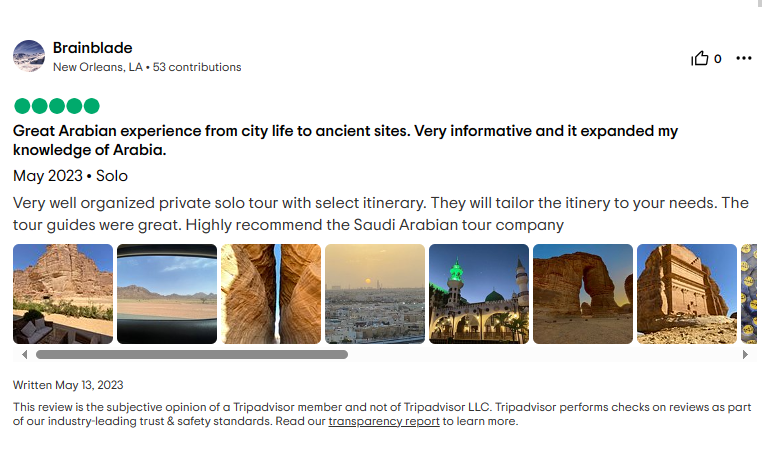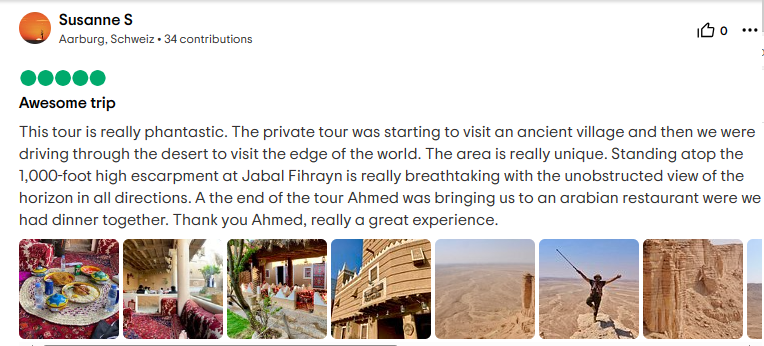
Saudi Arabia, located on the Arabian Peninsula in the Middle East, is a country of rich historical significance and diverse landscapes. Its roots trace back to ancient civilizations, evidenced by archaeological discoveries showcasing the Dilmun civilization, Thamūd, the Kingdom of Kinda, and the Al-Magar civilization. The establishment of the modern nation-state began in 1932 under the leadership of Abdulaziz bin Abdul Rahman, known as Ibn Saud, who unified diverse regions through a series of conquests. Saudi Arabia, often referred to as “the Land of the Two Holy Mosques” due to the presence of Mecca and Medina, holds a central role in the Islamic world. The discovery of oil in 1938 transformed its economy, making it the world’s second-largest oil producer and exporter. Over the years, the country has seen a succession of rulers from the Al Saud dynasty, each contributing to its development. In recent times, the nation has undergone transformative changes under the leadership of King Salman and his son, Crown Prince Mohammed bin Salman, who initiated social and economic reforms under Saudi Vision 2030. Today, Saudi Arabia stands at the crossroads of tradition and modernity, boasting a vibrant cultural heritage alongside a vision for a diversified and dynamic future.
History of Saudi Arabia
The genesis of Saudi Arabia as a nation-state can be traced back to the emergence of the Al Saud dynasty in central Arabia in 1727, leading to the establishment of the Emirate of Diriyah. Before the advent of Islam, the territory that now constitutes modern Saudi Arabia witnessed the flourishing of several ancient cultures and civilizations, showcasing some of the earliest traces of human activity in the world. The region also played a role within the Roman Empire. The birthplace of Islam, Saudi Arabia saw the unification of its population under the Islamic prophet Muhammad in the early 7th century, creating a single Islamic religious polity. Following Muhammad’s death in 632, the Islamic community rapidly expanded its territory beyond Arabia, founding significant caliphates such as the Rashidun, Umayyad, Abbasid, and Fatimid dynasties. Modern Saudi Arabia, comprising the historical regions of Hejaz, Najd, Eastern Arabia (Al-Ahsa), and Southern Arabia (‘Asir), was founded in 1932 by Abdulaziz bin Abdul Rahman, known as Ibn Saud. An absolute monarchy governed along Islamist lines, Saudi Arabia is often referred to as “the Land of the Two Holy Mosques” due to the presence of Al-Masjid al-Haram (in Mecca) and Al-Masjid an-Nabawi (in Medina). The discovery of petroleum in 1938 transformed the nation into the world’s second-largest oil producer and exporter, controlling significant reserves. From the early 20th century until the present, Saudi Arabia has seen the rule of Abdulaziz and six of his sons, each contributing to the country’s development and facing various challenges, from internal dissent to external alliances. The current crown prince, Mohammed bin Salman, has played a pivotal role in shaping the country’s direction, overseeing social reforms and economic diversification initiatives like Saudi Vision 2030.
Pre-Islamic Arabia
Indications of human habitation in the Arabian Peninsula trace back approximately 63,000 years,[15][16] yet the discovery of stone tools and fossils at Ti’s al Ghadah in northwestern Saudi Arabia suggests the possibility of hominid migration through a “Green Arabia” between 300,000 and 500,000 years ago.
Archaeological investigations have unveiled early settled civilizations in the region, including the Dilmun civilization to the east, Thamūd in the north of the Hejaz, the Kingdom of Kinda in the center, and the Al-Magar civilization in the southwest. The earliest recorded events in Arabian history involve migrations from the peninsula into neighboring areas.[18]
Evidence from Timna (Israel) and Tell el-Kheleifeh (Jordan) points to Qurayya/Midianite pottery originating from the Hejaz region of northwestern Saudi Arabia, suggesting that the biblical Midianites initially hailed from the Hejaz before expanding into Jordan and southern Israel.
A significant discovery in Dumat al-Jandal on June 9, 2020, revealed a 35-meter-long triangular megalithic monument dating back to the seventh millennium BC. Presumed to be dedicated to ritual practices, this find, documented in the journal Antiquity, sheds light on a pastoralist nomadic lifestyle and prehistoric rituals in Arabia, according to archaeological researchers from France, Saudi Arabia, and Italy, led by Olivia Munoz.
In May 2021, archaeologists announced the potential identification of the oldest human habitation site in northern Saudi Arabia, An Nasim, a 350,000-year-old Acheulean site located in the Hail region. Discovered in 2015 using remote sensing and palaeohydrological modeling, the site contains Middle Pleistocene materials, including 354 artefacts such as hand axes, stone tools, and flakes. These findings offer insights into the tool-making traditions of the earliest human inhabitants in southwestern Asia, with Paleolithic artefacts resembling those uncovered at Acheulean sites in the Nefud Desert.
Spread of Islam
Muhammad, the revered Prophet of Islam, was born in Mecca around 570 AD, initiating his prophetic mission by preaching in the city in 610. In 622, he and his followers migrated to Medina, marking a pivotal moment in Islamic history. It was in Medina that Muhammad, alongside his companions, successfully united the diverse tribes of Arabia under the banner of Islam, establishing a cohesive Arab Muslim religious polity across the Arabian Peninsula.
Upon Muhammad’s passing in 632, Abu Bakr assumed leadership as the first caliph, addressing the Ridda wars to quell rebellion before engaging the Byzantine Empire. Following his death in 634, Umar ascended as caliph, succeeded by Uthman ibn al-Affan and Ali ibn Abi Talib. This era, encompassing the leadership of these first four caliphs, is known as the Rashidun Caliphate (al-khulafā’ ar-rāshidūn). During their reign and the subsequent Umayyad rule from 661, Muslim territories expanded rapidly beyond Arabia. In a remarkably short span, Muslim armies triumphed over the Byzantine and Persian Empires, securing vast territories from the Iberian Peninsula to India. The focal point of the Muslim world then shifted to these newly conquered lands.
Despite these geopolitical shifts, Mecca and Medina retained their spiritual significance. The Quran mandates that every able-bodied Muslim, capable of doing so, must undertake the pilgrimage, or Hajj, to Mecca during the Islamic month of Dhu al-Hijjah, at least once in their lifetime. Mecca’s Masjid al-Haram, housing the Kaaba, Islam’s holiest site, and Medina’s Masjid al-Nabawi, containing Muhammad’s tomb, have drawn pilgrims from across the Muslim world since the 7th century, maintaining their status as central pilgrimage destinations.
Umayyad and Abbasid periods
Following the decline of the Umayyad empire in 750 CE, the territory that would later form Saudi Arabia reverted to traditional tribal governance in the aftermath of the initial Muslim conquests. It persisted as a dynamic patchwork of tribes, tribal emirates, and confederations, each varying in durability and influence. Muawiyah I, the inaugural Umayyad caliph, directed attention to his native Mecca, initiating construction projects and well-digging initiatives. Mecca, under subsequent Marwanid rulers, evolved into a cultural hub with thriving poets and musicians, yet Medina retained greater significance during much of the Umayyad era as the epicenter of the Muslim aristocracy. Yazid I’s reign saw the rebellion of Abd Allah bin al-Zubair, attracting Syrian troops to Mecca and resulting in the accidental destruction of the Kaaba, later reconstructed by Ibn al-Zubair. In 747, a Kharidjit rebel briefly seized Mecca, only to be defeated by Marwan II. The pivotal year of 750 witnessed Mecca, alongside the broader caliphate, transitioning to Abbasid rule. The subsequent emergence of the Sharifate of Mecca, led by the Hashemite Sharifs from the 10th to the 20th century, marked a significant chapter. Initially governing solely Mecca and Medina, their dominion expanded to encompass the entire Hejaz by the 13th century. Although the Sharifs wielded independent authority in the Hejaz, they often operated under the suzerainty of major Islamic empires such as the Abbasids, Fatimids, Ayyubids, and Mamluks throughout the Middle Ages.
Ottoman era
Following Selim I’s acquisition of Medina and Mecca in 1517, the Ottoman Empire expanded its territorial influence in the 16th century to include the Hejaz and Asir regions along the Red Sea, as well as the al-Hasa region on the Persian Gulf coast—critical areas that would later constitute Saudi Arabia. Ottoman control over these territories, including claims to the interior, fluctuated over the ensuing four centuries, mirroring the strength or weakness of the empire’s central authority. While the Sharifs of Mecca retained control over the Hejaz, the Ottoman influence persisted, often manifesting through governors and garrisons in Mecca. In the 17th century, Arab tribes temporarily wrested control of the al-Hasa region from Ottoman rule, only for the Ottomans to regain dominance in the 19th century. Concurrently, the interior remained under the governance of numerous tribal rulers, much akin to previous centuries.
The emergence of the Saudi dynasty unfolded in 1727, originating in central Arabia. Muhammad ibn Saud, tribal ruler of Ad-Dir’iyyah near Riyadh, formed an alliance with religious leader Muhammad ibn Abd-al-Wahhab in 1744, laying the foundation for the Wahhabi movement. This alliance fueled Saudi expansion, becoming the bedrock of Saudi Arabian dynastic rule. Over the subsequent 150 years, the fortunes of the Saud family oscillated as they contended with Egypt, the Ottoman Empire, and other Arabian families for control of the peninsula.
The establishment of the First Saudi State in 1727 marked a significant chapter in Saudi history, as it briefly controlled most of present-day Saudi Arabia, including the capture of Mecca in 1806 and Medina in 1804. Concerned about the growing power of the Saudis, the Ottoman Sultan Mustafa IV instructed Mohammed Ali Pasha in Egypt to reclaim the region. The Pasha’s sons, Tusun Pasha and Ibrahim Pasha, eventually succeeded in routing the Saudi forces in 1818, dismantling the power of the Al Saud.
In 1824, the Al Saud returned to power, establishing the Second Saudi State. However, their control was primarily restricted to the Najd region, encountering challenges from rivals like the Rashidis of Ha’il. Throughout the 19th century, the Al Saud and Al Rashid engaged in protracted struggles for control over the interior, culminating in the decisive defeat of the Al Saud by the Al Rashid in 1891, forcing the Saudis into exile in Kuwait.
Simultaneously, in the Hejaz, following the defeat of the First Saudi State, the Egyptians continued to occupy the region until 1840. Upon their departure, the Sharifs of Mecca reinstated their authority, coexisting with an Ottoman governor and garrison.
By the early 20th century, the Ottoman Empire retained control or nominal suzerainty over most of the Arabian Peninsula. Arabia was governed by a mosaic of tribal rulers, including the Al Saud, who returned from exile in 1902. The Sharif of Mecca held preeminence, ruling the Hejaz. In 1916, with the backing of Britain and France during World War I, Sharif Hussein bin Ali led a pan-Arab revolt against the Ottoman Empire, aiming for Arab independence and a unified Arab state.
The Arab Revolt, despite not involving the Al Saud due to historical rivalries, contributed to the Middle-Eastern Front and diverted Ottoman troops, aiding the Ottomans’ defeat in 1918. However, with the subsequent partitioning of the Ottoman Empire, the promised support for a pan-Arab state evaporated. Britain shifted support to the Al Saud, leaving Hussein diplomatically isolated. While the Arab Revolt failed to achieve its goal of a pan-Arab state, it succeeded in liberating Arabia from Ottoman suzerainty and control.
Unification
In 1902, Abdul-Aziz Al Saud, leader of the Al Saud, emerged from exile in Kuwait, reigniting the conflict with the Al Rashid. His capture of Riyadh marked the inception of the Third Saudi State, initiating a series of conquests that ultimately culminated in the establishment of the modern state of Saudi Arabia in 1930. Central to these conquests was the Ikhwan, the Wahhabist-Bedouin tribal army led by Sultan bin Bajad Al-Otaibi and Faisal al-Duwaish.
By 1906, Abdulaziz had successfully driven the Al Rashid out of Najd, gaining recognition from the Ottomans as their client in the region. His strategic acquisition of Al-Hasa from the Ottomans in 1913 provided control over the Persian Gulf coast and the future site of Saudi Arabia’s extensive oil reserves. Despite abstaining from involvement in the Arab Revolt, Abdul-Aziz continued his campaign against the Al Rashid in northern Arabia, achieving a significant victory in 1921.
Before 1923, Abdulaziz had refrained from invading the Hejaz due to the support given to Hussein bin Ali, King of the Hejaz, by Britain. However, when British support withdrew in 1923, Abdulaziz convened a conference in Riyadh in July 1924 to address grievances against the Hejaz, including hindrances to pilgrimage from Najd. The Ikhwan, now mobilized on a large scale, advanced on Mecca under Khalid bin Lu’ayy and Sultan bin Bajad, completing the conquest of the Hejaz by the end of 1925. On January 10, 1926, Abdulaziz declared himself King of the Hejaz, followed by the title King of Najd on January 27, 1927. The utilization of the Ikhwan for the conquest brought about significant societal changes, replacing the cosmopolitan structure of the Hejaz with a mandated Wahhabi culture.
The Treaty of Jeddah, signed on May 20, 1927, marked the recognition of Abdul-Aziz’s realm’s independence by the United Kingdom, then known as the Kingdom of Hejaz and Najd. Post the Hejaz conquest, Ikhwan leaders aspired to extend the Wahhabist realm into British protectorates, yet Abdul-Aziz, mindful of the perils of direct conflict with the British, refused to agree. This led to an Ikhwan revolt, culminating in their defeat in the Battle of Sabilla in 1929, with many Ikhwan leaders meeting their demise.
In 1932, the Kingdom of Saudi Arabia was established, unifying the kingdoms of the Hejaz and Najd. Boundaries with Transjordan, Mandatory Iraq, and Kuwait were solidified through treaties in the 1920s, creating “neutral zones” with Iraq and Kuwait. The southern boundary with Yemen found definition in the 1934 Treaty of Ta’if, concluding a brief border war between the two states.
Modern history
Although Abdulaziz achieved military and political success, Saudi Arabia faced economic challenges until the discovery of significant oil reserves in the Al-Hasa region along the Persian Gulf coast in 1938. Economic development commenced in 1946, post the World War II delay, with full-scale oil production by 1949.
In February 1945, Abdulaziz and U.S. President Franklin D. Roosevelt met aboard the USS Quincy in the Suez Canal, solidifying a historic handshake agreement. This agreement, still in effect today, stipulated that Saudi Arabia would supply oil to the United States in exchange for American military protection of the Saudi regime. Abdulaziz’s death in 1953 marked the ascension of his son, King Saud, to the throne. Oil brought economic prosperity to Saudi Arabia, yet the government’s extravagant spending in the 1950s led to deficits and foreign borrowing, despite newfound wealth.
By the early 1960s, a rivalry between King Saud and his half-brother, Prince Faisal, emerged, resulting in Saud’s deposition in favor of Faisal in 1964. The mid-1960s witnessed tensions with Egypt over Yemen, as Saudi Arabia supported Yemeni royalists against republicans backed by Egyptian forces. Tensions subsided after 1967 when Egypt withdrew its troops. The 1973 Arab-Israeli war saw Saudi Arabia participating in the Arab oil boycott, enhancing the country’s wealth and political influence.
King Faisal’s assassination in 1975 led to the reign of his half-brother, King Khalid, characterized by rapid economic and social development. In 1979, events such as the Iranian Islamic revolution and the Grand Mosque seizure influenced Saudi foreign and domestic policies, leading to a stricter observance of Islamic norms.
King Khalid’s death in 1982 brought King Fahd to power, maintaining close ties with the United States and modernizing Saudi Arabia’s infrastructure and educational system. After the Iraqi invasion of Kuwait in 1990, Saudi Arabia joined the anti-Iraq coalition. In 1995, Fahd’s stroke shifted responsibilities to Crown Prince Abdullah, who officially ascended to the throne in 2005. Abdullah pursued moderate reforms, including limited deregulation, privatization, and foreign investment. His reign also witnessed increased terrorist activity, prompting stricter counter-terrorism measures.
Upon King Abdullah’s death in 2015, Salman became king and initiated reforms, including Saudi Vision 2030, aiming to diversify the economy. Crown Prince Mohammed bin Salman, appointed in 2017, led progressive changes, such as granting women the right to drive and initiating economic diversification. However, his rule has faced criticism for issues like the murder of journalist Jamal Khashoggi and alleged human rights violations.
Visit Saudi Arabia Destinations Now
Here are some of our Saudi Arabia private tours, offering you the opportunity to embark on a captivating journey through the Kingdom of Saudi Arabia. Immerse yourself in the rich history of Saudi Arabia as you explore ancient wonders in cities like Riyadh, Jeddah, and Mecca. Discover the archaeological marvels of Al-Ula, with its UNESCO-listed Madain Saleh, and stroll through the traditional streets of Al-Ula Old Town. Experience the highland haven of Abha, nestled in the Asir Province, where you can explore Asir National Park and the historic village of Habala. Take in the breathtaking views at Al-Soudah Park and witness the natural beauty that defines the diverse landscapes of this enchanting kingdom. Whether you’re drawn to the historical charm of Riyadh or the mountainous landscapes of Abha, our Saudi Arabia private tours promise “A Trip to Remember.”

4 Days Riyadh Heritage Tour Package


Saudi Arabia Explorer Riyadh, AlUla and Jeddah – 8 Days

Majestic Tour of Saudi Arabia – 10 Days

How Good are Saudi Arabia Tours?
Saudi Arabia Tours prides itself on being the best travel agency in Saudi Arabia as proven by our numerous positive reviews.



Frequently Asked Questions?
Is Saudi Arabia safe for tourists?
Tourists have been visiting Saudi Arabia and Saudi Arabians have a well-earned reputation for warmth and kindness toward visitors. Saudi Arabia cities are generally very safe, especially in areas where tourists frequent.
How to get a Saudi tourist visa?
Applying for a tourist visa to Saudi Arabia is easy. If you are from one of the 49 eligible countries, you can apply through the eVisa website. Holders of US, UK, or Schengen visas can apply for the visa upon arrival. Saudi Arabia is opening its doors to the world through its new tourist visa. Visitors will have the chance to discover and experience the warm hospitality of the Saudi people, the rich heritage, the vibrant culture, and Saudi Arabia’s diverse and breathtaking landscapes. The visa will be a one-year, multiple-entry visa, allowing tourists to spend up to 90 days in the country.
Are non-Muslims allowed in Saudi?
Non-Muslims can travel to all cities in Saudi Arabia except Medinah and Mekkah, Not allowed to non-Muslims to enter Mecca and Medinah.
Can I wear jeans in Saudi Arabia?
Both men and women are asked to dress modestly in public, avoiding tight-fitting clothing. Women should cover their shoulders and knees in public.
Contact us for more information on:
saudiarabiatours.net@gmail.com
Address: Head Office Olaya St, Riyadh 12213, Saudi Arabia.
If you are booking and taking the tour within 24 hours, or have an urgent request, call us on
Cell/whatsapp : +966558018938 For more info please visit Saudi Arabia Tours

